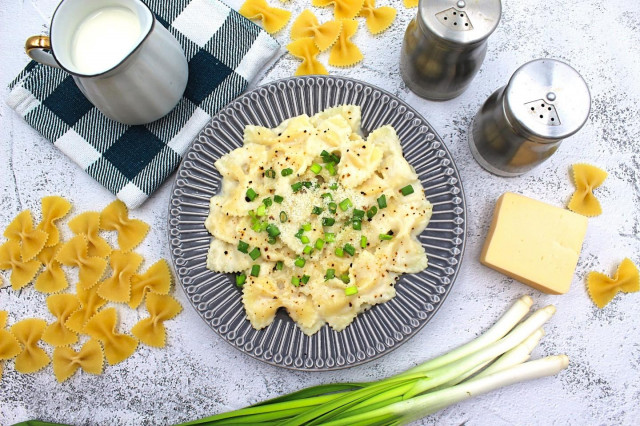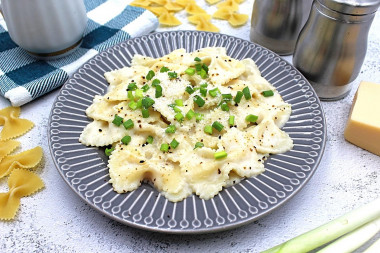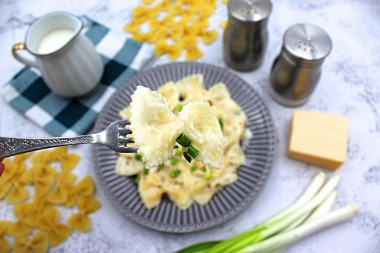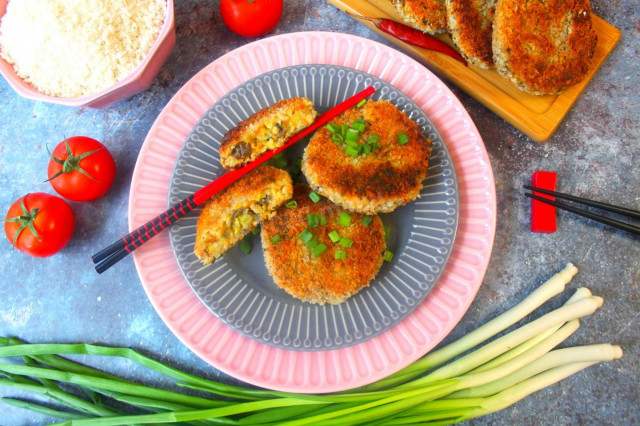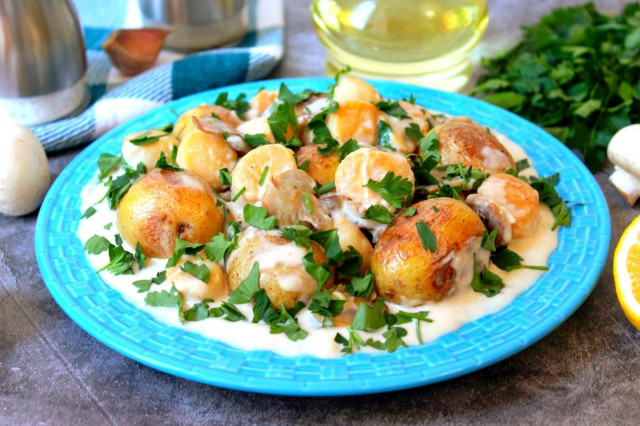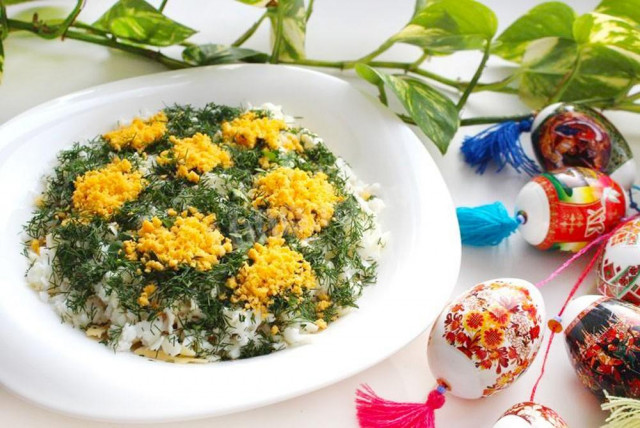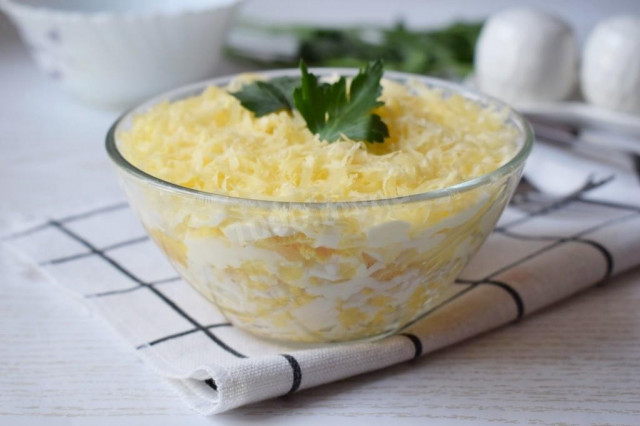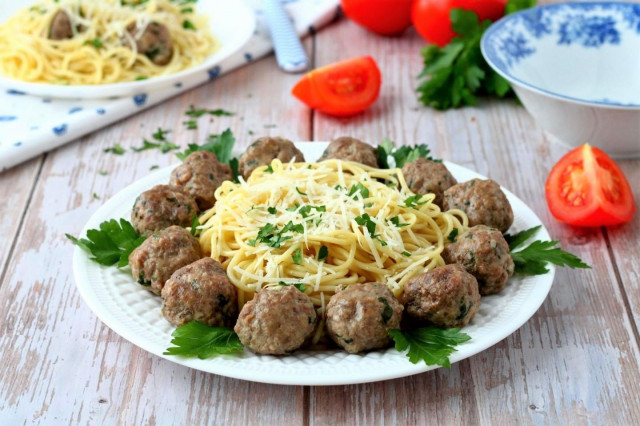Composition / ingredients
Step-by-step cooking
Step 1:
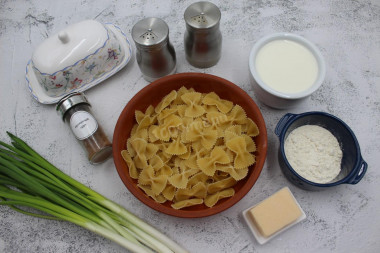
Prepare all the ingredients. You can choose any pasta for this dish: shells, farfalle, fusilli, penne and other varieties of pasta. It is also better to choose pasta from durum wheat for this dish. Use hard cheese: Russian, poshekhonsky and similar types of cheeses, it is better to take milk with a fat content of 2.5%. Green onions can be replaced with any other greens.
Step 2:
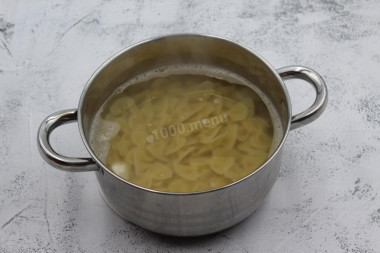
Pour water into a saucepan and put it on the fire. Please note that the pasta should be cooked in a large amount of water, so take the appropriate pan. When the water boils, add salt to it and pour the pasta into it. Cook the pasta, without closing the pan with a lid, until al dente.
Step 3:
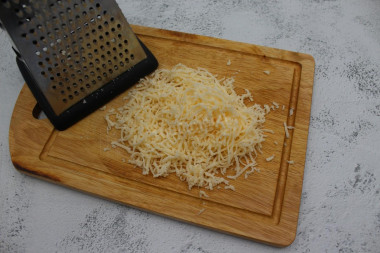
Grate the cheese on a fine grater and cover it with cling film so that it does not chafe while the cream sauce is being prepared.
Step 4:
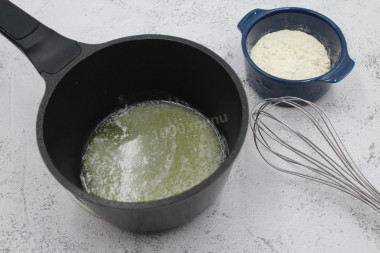
Put the butter in a small ladle and melt it over medium heat without bringing the butter to a boil. In the melted butter, begin to introduce the sifted wheat flour, stirring constantly. Frying the flour, there should be no lumps.
Step 5:
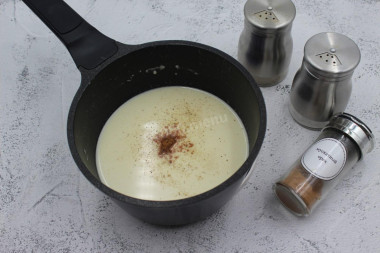
Start pouring milk into the ladle with a small trickle, immediately add spices: ground nutmeg, freshly ground black pepper and salt. Boil the milk mixture a little, the sauce should start to thicken, but not much. When cooling, the sauce will thicken even more.
Step 6:
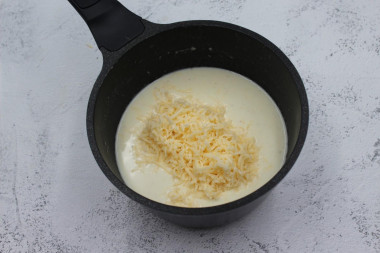
At the moment of thickening of the cream sauce, pour in the grated cheese and mix immediately. The cheese should melt in the hot sauce and acquire a pleasant delicate cheese taste.
Step 7:
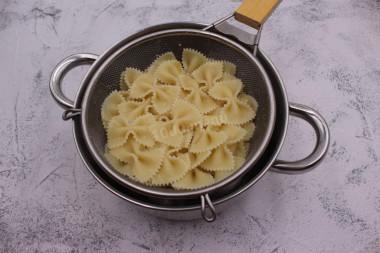
Put the finished boiled pasta in a colander and let the excess liquid drain.
Step 8:
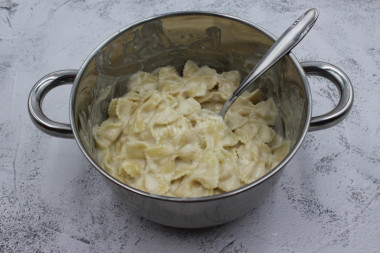
Return the pasta back to the pan and pour in the cream sauce with cheese, mix.
Step 9:
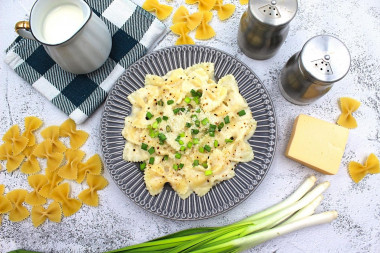
Put the finished creamy macaroni and cheese on a plate and sprinkle them with chopped green onions.
If desired, brisket, shrimp, fried mushrooms, pieces of chicken fillet or salmon can be added to such pasta for more taste and variety.
For a change, creamy pasta can also be baked in the oven. Just put the ready-made creamy pasta out of the pan into a baking dish, sprinkle more grated cheese on top and bake the pasta in a preheated oven for 10-15 minutes at a temperature of 200oC.
How to boil pasta properly? Take a spacious saucepan, pour water at the rate of 100 grams of pasta 1 liter of water. The main thing is that the products float freely in the liquid. Add salt to taste. Bring the water to a boil. It is important to put the pasta in boiling water, otherwise they may stick together. Cook over medium heat, stirring occasionally, until fully cooked or al dente (cooking time is always indicated on the package). Put the finished pasta in a colander and let the liquid drain. It is not necessary to rinse the finished pasta with water. If you do not plan to immediately mix the pasta with the sauce, then in order to avoid sticking hot pasta, you can send them from the colander back into the pan and add a teaspoon of olive oil (or a piece of butter)and mix gently.
Caloric content of the products possible in the composition of the dish
- Whole cow's milk - 68 kcal/100g
- Milk 3.5% fat content - 64 kcal/100g
- Milk 3.2% fat content - 60 kcal/100g
- Milk 1.5% fat content - 47 kcal/100g
- Concentrated milk 7.5% fat content - 140 kcal/100g
- Milk 2.5% fat content - 54 kcal/100g
- Pasta, premium, fortified - 337 kcal/100g
- Pasta, premium, dairy - 309 kcal/100g
- Pasta, premium, egg - 342 kcal/100g
- Pasta made from flour of the 1st grade - 333 kcal/100g
- Pasta made of flour in / with - 338 kcal/100g
- Boiled pasta - 135 kcal/100g
- Pasta - 338 kcal/100g
- Dutch cheese - 352 kcal/100g
- Swiss cheese - 335 kcal/100g
- Russian cheese - 366 kcal/100g
- Kostroma cheese - 345 kcal/100g
- Yaroslavsky cheese - 361 kcal/100g
- Altai cheese 50% fat content - 356 kcal/100g
- Soviet cheese - 400 kcal/100g
- Cheese "steppe" - 362 kcal/100g
- Uglich cheese - 347 kcal/100g
- Poshekhonsky cheese - 350 kcal/100g
- Lambert cheese - 377 kcal/100g
- Appnzeller cheese with 50% fat content - 400 kcal/100g
- Chester cheese with 50% fat content - 363 kcal/100g
- Edamer cheese with 40% fat content - 340 kcal/100g
- Cheese with mushrooms of 50% fat content - 395 kcal/100g
- Emmental cheese with 45% fat content - 420 kcal/100g
- Gouda cheese with 45% fat content - 356 kcal/100g
- Aiadeus cheese - 364 kcal/100g
- Dom blanc cheese (semi-hard) - 360 kcal/100g
- Lo spalmino cheese - 61 kcal/100g
- Cheese "etorki" (sheep, hard) - 401 kcal/100g
- White cheese - 100 kcal/100g
- Fat yellow cheese - 260 kcal/100g
- Altai cheese - 355 kcal/100g
- Kaunas cheese - 355 kcal/100g
- Latvian cheese - 316 kcal/100g
- Limburger cheese - 327 kcal/100g
- Lithuanian cheese - 250 kcal/100g
- Lake cheese - 350 kcal/100g
- Gruyere cheese - 396 kcal/100g
- Whole durum wheat flour fortified - 333 kcal/100g
- Whole durum wheat flour, universal - 364 kcal/100g
- Flour krupchatka - 348 kcal/100g
- Flour - 325 kcal/100g
- Butter 82% - 734 kcal/100g
- Amateur unsalted butter - 709 kcal/100g
- Unsalted peasant butter - 661 kcal/100g
- Peasant salted butter - 652 kcal/100g
- Melted butter - 869 kcal/100g
- Green onion - 19 kcal/100g
- Salt - 0 kcal/100g
- Water - 0 kcal/100g
- Pepper - 26 kcal/100g
- Nutmeg - 556 kcal/100g

